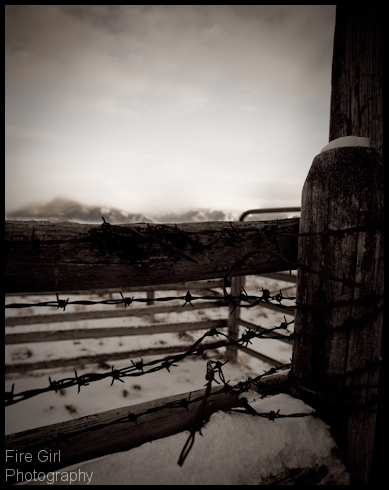 When we look at a picture, our minds immediately seek the near space and the far distance. We look to the first and the last and tend to ignore the interim – the middle distance.
When we look at a picture, our minds immediately seek the near space and the far distance. We look to the first and the last and tend to ignore the interim – the middle distance.
Take this picture of the Madison Valley taken on a sub-zero night last winter. The first thing the viewer’s eye is drawn to is the old fence line foremost in the image. The rusty, cold barbed wire and the icy snow, frozen hard in the frigid temperatures, capture the eye first. Then our gaze travels to the foggy mountains in the background; taking in the quintessentially grey winter sky and the fuzziness of the distant range.
But what about the planks and boards making up the rest of the corral in the middle distance? The old pipe gate off to the right that, by some miracle, looks as if it still might swing straight after all of the years? The fact that no boards have fallen and the corral is in good repair – indicating that it is still in use?
It’s easy to overlook the middle distance in an image, but sometimes that is where the best stories are told. Look beyond the obvious, beyond the traditional framing. What was the photographer trying to capture, what story is being told that most viewers will not see?
The miracle of the middle distance – it opens up a whole new world.
Tags: Techniques












{ 1 comment… read it below or add one }
Wow. Pretty awesome shot and great description of the fore, middle, and background. Great photo! Travis